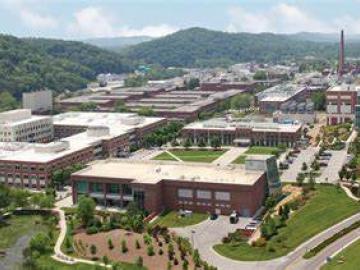Filter News
Area of Research
- Advanced Manufacturing (10)
- Biology and Environment (19)
- Clean Energy (84)
- Computer Science (1)
- Electricity and Smart Grid (1)
- Energy Frontier Research Centers (1)
- Fusion and Fission (10)
- Isotope Development and Production (1)
- Isotopes (2)
- Materials (83)
- Materials Characterization (1)
- Materials for Computing (12)
- Materials Under Extremes (1)
- National Security (9)
- Neutron Science (26)
- Nuclear Science and Technology (6)
- Quantum information Science (1)
- Supercomputing (27)
News Type
News Topics
- (-) 3-D Printing/Advanced Manufacturing (76)
- (-) Grid (36)
- (-) Materials Science (86)
- (-) Nanotechnology (42)
- Advanced Reactors (16)
- Artificial Intelligence (65)
- Big Data (28)
- Bioenergy (70)
- Biology (75)
- Biomedical (43)
- Biotechnology (16)
- Buildings (28)
- Chemical Sciences (45)
- Clean Water (15)
- Climate Change (65)
- Composites (14)
- Computer Science (132)
- Coronavirus (34)
- Critical Materials (11)
- Cybersecurity (31)
- Decarbonization (56)
- Education (3)
- Element Discovery (1)
- Emergency (2)
- Energy Storage (68)
- Environment (132)
- Exascale Computing (30)
- Fossil Energy (4)
- Frontier (33)
- Fusion (40)
- High-Performance Computing (63)
- Hydropower (5)
- Isotopes (39)
- ITER (4)
- Machine Learning (31)
- Materials (94)
- Mathematics (5)
- Mercury (9)
- Microelectronics (2)
- Microscopy (35)
- Molten Salt (3)
- National Security (46)
- Net Zero (9)
- Neutron Science (92)
- Nuclear Energy (74)
- Partnerships (36)
- Physics (49)
- Polymers (19)
- Quantum Computing (24)
- Quantum Science (51)
- Renewable Energy (2)
- Security (21)
- Simulation (33)
- Software (1)
- Space Exploration (14)
- Statistics (1)
- Summit (49)
- Sustainable Energy (68)
- Transformational Challenge Reactor (7)
- Transportation (50)
Media Contacts

ORNL researchers modeled how hurricane cloud cover would affect solar energy generation as a storm followed 10 possible trajectories over the Caribbean and Southern U.S.

Scientists at ORNL have developed a method that demonstrates how fiber-reinforced polymer composite materials used in the automotive, aerospace and renewable energy industries can be made stronger and tougher to better withstand mechanical or structural stresses over time.

Rishi Pillai and his research team from ORNL will receive a Best Paper award from the American Society of Mechanical Engineers International Gas Turbine Institute in June at the Turbo Expo 2024 in London.

ORNL’s Erin Webb is co-leading a new Circular Bioeconomy Systems Convergent Research Initiative focused on advancing production and use of renewable carbon from Tennessee to meet societal needs.

ORNL researchers are working to make EV charging more resilient by developing algorithms to deal with both internal and external triggers of charger failure. This will help charging stations remain available to traveling EV drivers, reducing range anxiety.

Scientists at ORNL have developed 3D-printed collimator techniques that can be used to custom design collimators that better filter out noise during different types of neutron scattering experiments
ORNL scientists have determined how to avoid costly and potentially irreparable damage to large metallic parts fabricated through additive manufacturing, also known as 3D printing, that is caused by residual stress in the material.

SkyNano, an Innovation Crossroads alumnus, held a ribbon-cutting for their new facility. SkyNano exemplifies using DOE resources to build a successful clean energy company, making valuable carbon nanotubes from waste CO2.

Scientists at ORNL are looking for a happy medium to enable the grid of the future, filling a gap between high and low voltages for power electronics technology that underpins the modern U.S. electric grid.

The 2023 top science achievements from HFIR and SNS feature a broad range of materials research published in high impact journals such as Nature and Advanced Materials.




